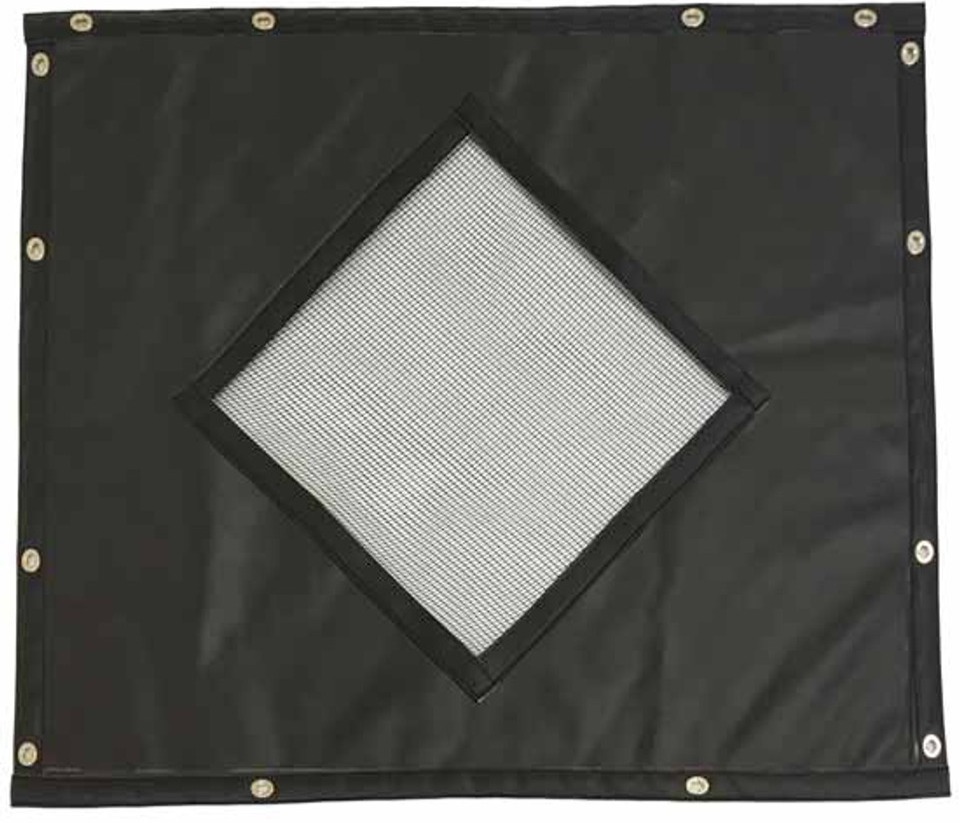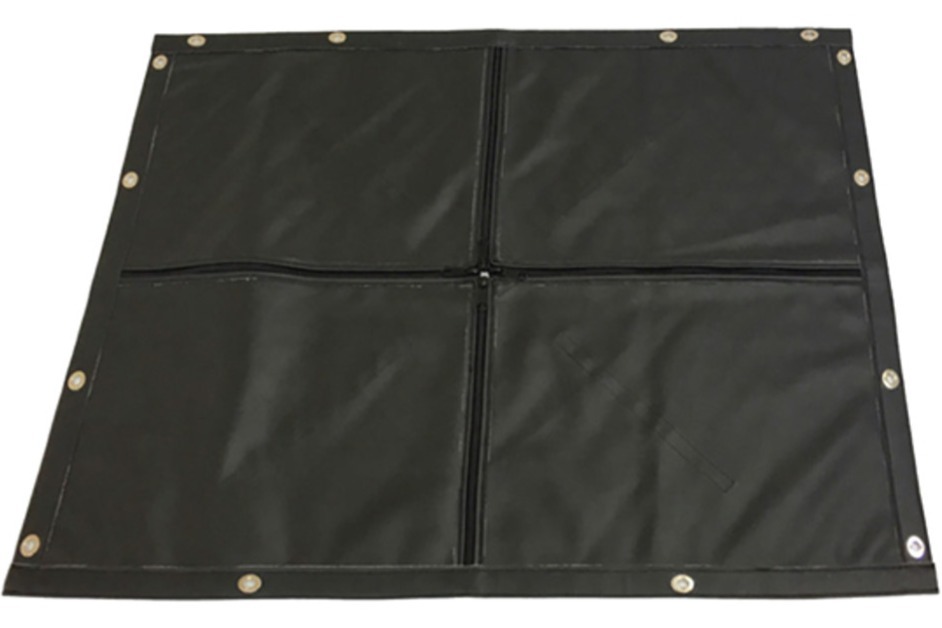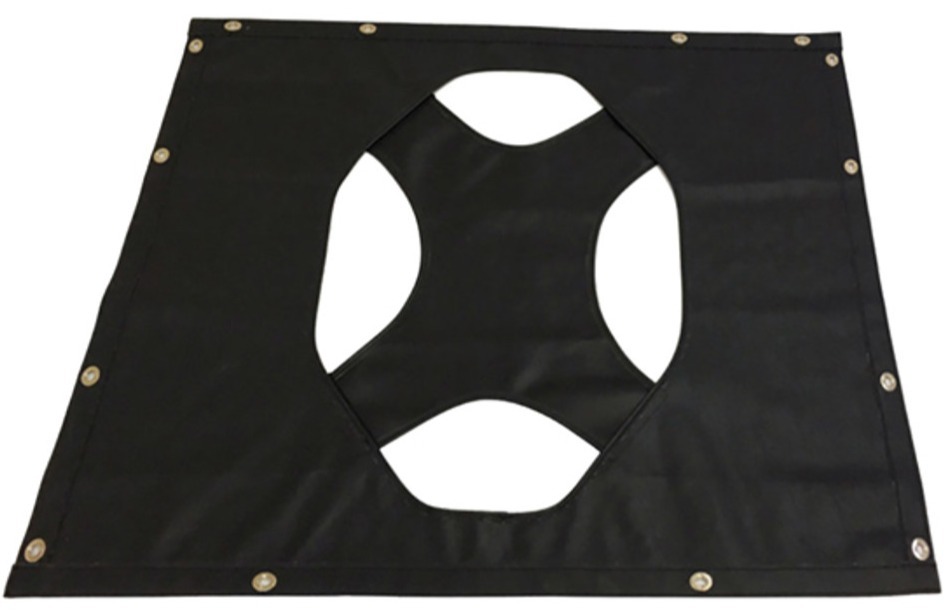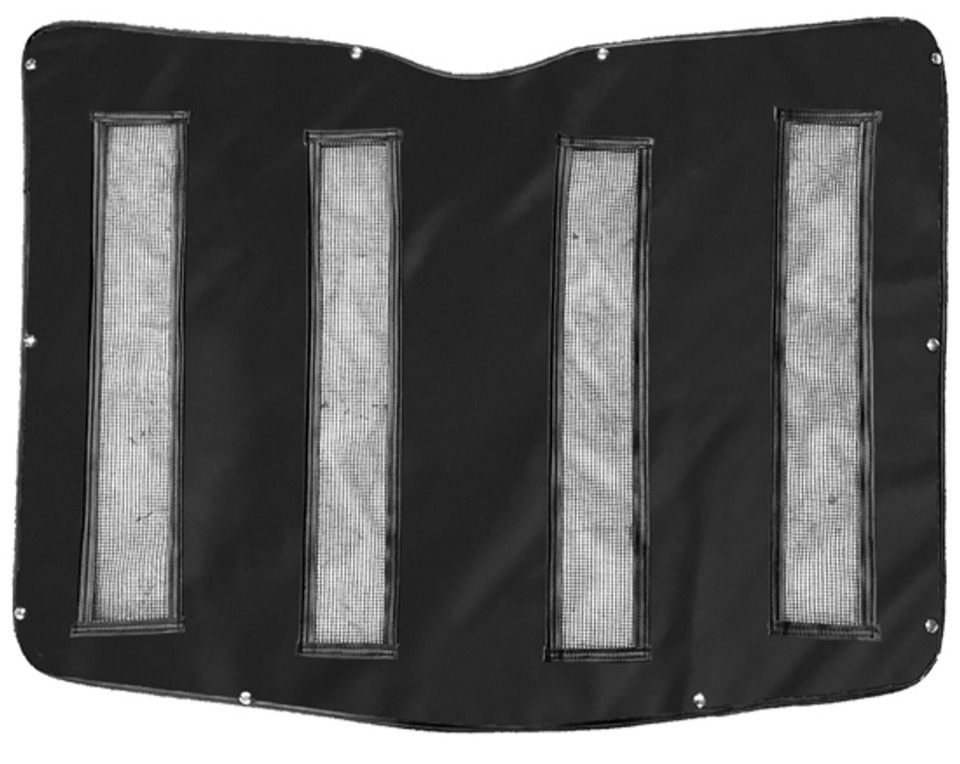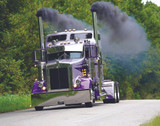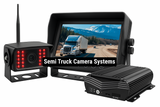Semi Truck Winter Fronts: Useful or Outdated?
So, you're prepping your big rig for a cold and rainy season and you're thinking about winter fronts for your semi truck.
Are they an outdated relic from the past or a useful seasonal accessory for a saavy owner-operator?
Here are the key points you have to know:
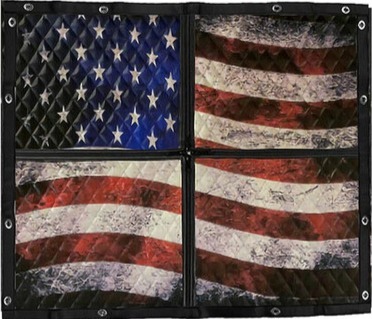
Winter fronts are only applicable to trucks that operate in extreme cold (-22F) – especially if you’re driving through rain, sleet, and corrosive road salt. Frozen chunks of ice can accumulate in your front grill and dirty your radiator.
A winter front efficiently creates a wall of heat and prevents ice and salt water from entering the radiator/grille area. Once the weather gets above freezing, remove the winter front. You don’t want to consistently block off airflow to your radiator.
Granted, many modern truck models have built-in technology that automatically does the job of the winter front.
But for classic, older truck models operating in sub-40-degree temperatures, the winter front is well worth having on your rig.
What is a Winter Front?

Winter fronts act as a physical barrier to block ice cold air and corrosive road particulate from entering the grille and radiator.
Winter grille covers work to optimize fuel and energy consumption by keeping out ice particles and corrosive road particulate that could otherwise impact your radiator components.
Engine Temperature Regulation in Cold Weather
Semi truck radiators shed a lot of heat under heavy loads. In below-freezing temperatures, unrestricted airflow can overcool the engine and prevent it from reaching optimal operating temps. The winter front restricts the icy air.
Radiator & Component Protection
Alongside serving as a heat wall, winter fronts are a physical barrier thta stops ice chunks and slush from entering into your radiator fins, condensor parts, and sensors.
Materials and Construction of Modern Winter Fronts
Common Materials and Designs
The most common material for diesel winter grille blankets are heavy-duty reinforced vinyl. Some winter fronts are quilted multi-layer designs that are lightweight and easy to store.
The Pros of Winter Fronts
- Winter fronts are incredibly easy to attach; they just snap into place.
- Fuel efficiency can improve during idle reduction.
- You can get faster cab heat generation during sub-freezing temperatures.
The Cons of Winter Fronts
A lot of new models with built-in temperature regulation features can render winter fronts pretty much useless.
There’s also the risk of excessively restricting airflow to your truck!
If you're operating in temps at 40 degrees or above, a winter front will only raise intake temps, reducing your charge air cooler (CAC) efficiency. A.K.A - don't use it.
This is also partly why adjustable winter fronts (with zippers or slots) are more useful designs; they're breathable.
Best Winter Front Styles to Buy: Quilted, Non-Quilted, Zipper
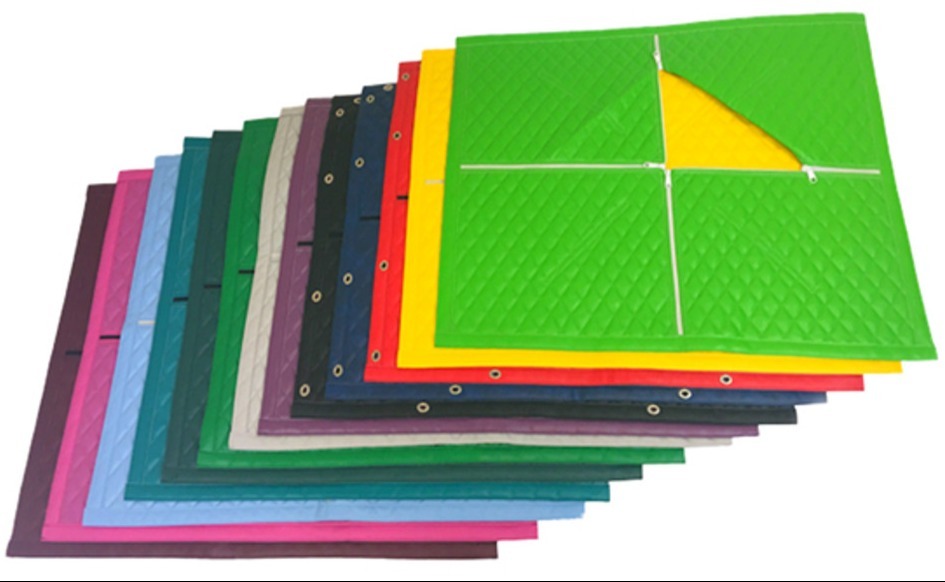
Standard Vinyl Winter Fronts
Multiple color options. Simple to setup. Affordable. Easy to pack. Classic vinyl winter fronts are a great starter choice.
Find the Right ColorWinter Front + Bug Screen Combo
Keep the bug guts and ice cold temperatures out with a two-for-one combo product package exclusively for Volvo VNL Gen II truck models.
Snag a Deal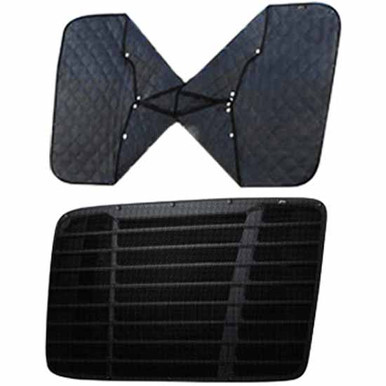
Choose From Various Designs
When and How to Use a Winter Front Safely
Climate and Temperature Guidelines
Full Coverage:
- Great for extreme cold
- Stops the radiator from freezing due to cold airflow
- Helps engine maintain steady operating temperature
Partial Coverage:
- Great for moderate cold
- Cover only the lower grille or keep one section unzipped to balance airflow
- Prevents over-restriction of air that causes overheating
Adjustable Openings
Zippered Winter Fronts:
- Vertical or horizontal zippers for fine-tuning airflow
Slotted or Door-Style Winter Fronts:
- Built-in doors or slots that open/close with snaps, Velcro, or hook-and-loop strips
Choosing the Right Winter Front for Your Truck
Easy. Match it up to your make/model truck grille. Remember that some models don't actually need a winter front.
Winter Front Maintenance & Storage
Cleaning Vinyl and Quilted Covers
For most vinyl and quilted covers, rinse it off with a water hose to get rid of the road salt, grime, and remaining bug splatter. You can use a soft brush or sponge with some soap to clean it. Avoid harsh detergents that destroy the protective coating.
Prevent Mildew or Cracking
Before storing it, dry the cover completely. Keep it in a breathable sealed bag to avoid trapping any moisture. You can (optional) apply UV protectant spray to keep the vinyl material supple.
Off-Season Storage Tips
Properly fold it and store in a cool, dry location. If you’re using a snap kit, wipe down the straps and turn buttons.
Alternatives to Winter Fronts
Engine Block Heaters
Unlike winter fronts, you don’t drive while these are on. They just help you start the engine in extremely cold temperatures.
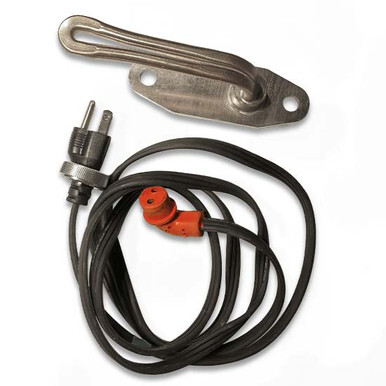
1500 Watt (Plug included) Engine Block Heater for Cummins Signature 600 ISX & QSX - used on Freightliner, Kenworth, Peterbilt and Volvo truck models. Plate-mounted and runs on 120 Volts.
1500 Watt (Plug included) Block Heater for CAT & Detroit Engines - used International/Navistar, Perkins, Detroit, and Caterpillar Engines.
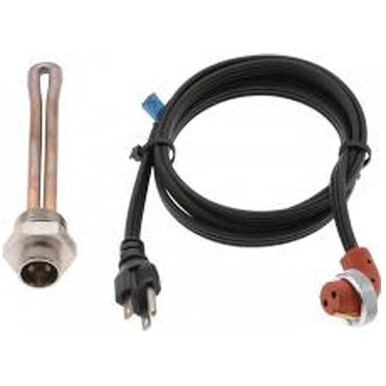
Engine block heaters are plug-in electric heaters that warm up the engine block or oil pan, warming your internal engine components.
Block heaters don’t affect the air flow coming into your grille; they just help to warm up engine components before you start driving the truck.
Peterbilt 579 and Kenworth T680 usually use 120V block heaters that are mounted on the coolant jacket. The Freightliner Cascadia comes with a pre-installed AC-powered block heater.
Radiator Shutters
These are common with old-school truck models. Back in the day, they used to manually shut the front grille louvers to prevent ice coming into the radiator.
Newer models like the Kenworth T680 Next Gen have automatic grille shutters to help with temperature regulation. The Freightliner Cascadia also has active grille shutters (AGS).
Winter fronts aren’t necessary for trucks that have these built-in features. Now, if you want to store a back-up winter front in your rig, just in case, go for it!
Smart Idle Systems
These automated idle management systems cycle the engine on/off or run auxiliary power units (APUs) to keep the cab temperatures and semi-truck batteries in range without having to constantly idle.
Unlike winter fronts, which only manage airflow and radiator temperatures, smart idle system manage the energy use of the entire truck (coolant temps, interior cab heating, etc.).
New models like the Freightliner Cascadia offer Detroit Diesel’s Optimized Idle® – which monitors voltage and coolant temperatures. The Peterbilt 579 uses a SmartAir™ idle management system.
You can spec the Kenworth T680 with a Cummins or PACCAR smart idle system.
Turn Your Truck into a Winter-Ready Big Rig with 4 State Truck Parts & Accessories
Prep your big rig to be winter ready with a premium semi truck winter front and pair it with other accessories designed to help you get through low-temperature payload runs: fuel additives, tire chains, air dryers, extra clearance lights, heated mirrors, and more.
Shop for it all at 4 State Trucks by using our mobile app or by dropping by our store in Joplin, Missouri.
Recent Posts
-
Haul of Fame: Inside Ivy’s Poison – The Wild 1986 Peterbilt 359 That Refused to Die
If you hang around truck shows long enough, you start hearing the same names over and over. Some are …19th Dec 2025 -
The Ultimate Guide to Custom Semi Truck Upholstery (Everything You Need to Know)
Almost any custom show truck prioritizes quality interior upholstery material and stitch design, be …16th Dec 2025 -
What Does the FASS Fuel System Do?
Want to protect and clean your diesel fuel system in one go? The FASS (fuel air separation system) i …12th Dec 2025 -
Semi Truck Muffler Guide
Need to lower your exhaust and engine noise, but aren’t sure what muffler to get? We offer Pittsburg …5th Dec 2025 -
Custom Underglow Light Setups on Semi Trucks
If you're looking for a way to dramatically enhance the look and presence of your semi truck at nigh …28th Nov 2025 -
Common Myths and Mistakes When Buying Aftermarket Semi Truck Parts (Ultimate Guide)
Cost, convenience, and make/model fitment are the top priorities when it comes to buying aftermarket …18th Nov 2025 -
Haul of Fame: Tony's Custom Retro W900 Kenworth
Tony Huttenstine is a seasoned owner-operator. Over the years, he has poured enormous time, money, a …14th Nov 2025 -
The 13 Best Christmas Gift Ideas for Truckers
Some of the best gifts for truck drivers are accessories that help make their job easier. Truckers s …11th Nov 2025 -
Best Semi Truck Camera Systems (Buyer's Guide)
Backup cameras can be a downright lifesaving accessory for truck drivers. But with countless commerc …7th Nov 2025 -
The 85-Year History of Peterbilt Trucks (Quickly Summarized)
Peterbilt: A Legendary Name in American Trucking A fast, engaging history—from WWII logging ingen …31st Oct 2025



